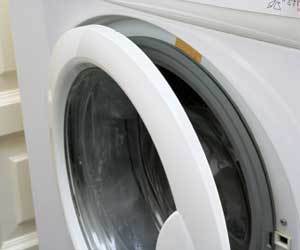Mould and Cloth Nappies
Mould is a type of fungi that reproduces by making spores and LOVES damp and poorly ventilated areas. Mould spores can be airborne and can lie dormant waiting to germinate, grow and spread until they find the perfect conditions. You'll know if you have mould on your nappies if small black dots start appearing on the fabric that can't be rubbed or washed off. And they multiply!
What causes Mould?
There are several factors which create the perfect conditions for mould to grow: time, moisture (especially warm moisture like you get in humid climates) and poor air circulation. They also love cellulose based fabrics like bamboo, cotton and hemp. Mould in nappies is usually the result of:
1. nappies/inserts not being dried thoroughly before being put away;
2. nappies being left too long before being washed;
3. or nappies being left too long in conditions where humidity/condensation can build up - like in a nappy bucket or washing machine.
How to prevent Mould
Airborne mould spores can be found inside and outside and there's no real way to stop them coming into your home. The best way to prevent mould is to make sure you don't create the conditions they thrive in.- Make sure that all nappies and inserts are thoroughly dry before putting them away. In winter or in tropical areas this can be tricky to do on the line, so finishing them off in front of the heater or in the dryer will help.
- Don't leave nappies for too long before washing. Ideally you shouldn't leave nappies more than 48 hours or so before washing.
- Don't wash your nappies and then leave them in the washing machine for several hours before hanging them out.
- Air circulation, especially in humid climates, is important. If humidity is a problem in your area, try not to leave nappies sealed up in a wetbag or bucket for too long. Try using a swing top bin instead of a bucket with sealing lid to store your wet/dirty nappies. Or perhaps don't use a lid at all, if your laundry is well ventilated.
- Clean your nappy bucket or wetbag between loads and dry out in the sun.
How to get rid of Mould
Mould and its stains can be really hard to get rid of. Don't forget that the nappy bucket and any wetbags will have to be treated too, in case they have mould spores. Treating your washing machine and checking other areas of your house at the same time is also recommended.
There are lots of recommendations for getting rid of mould and some work better for some people than others. It can depend on the type of mould you have and what you're trying to remove it from. Some nappy manufacturers have specific recommendations for dealing with mould, so it's best to check the manufacturer's website before treating. The mould needs to be killed so it doesn't return.
Some options to consider are:- A bleach solution - soaking nappies in a solution of bleach and water - Cloth Nappy Help and Clean Cloth Nappies both have instructions on how to effectively use this method.
- A 90/95 degree hot wash (inserts only) with detergent.
- oil of cloves (a mould inhibitor) - 1/4 teaspoon of clove oil to 1L water sprayed on affected areas and left to dry (be VERY careful, this can irritate the skin so needs to to washed out thoroughly)
- soaking inserts in a nappy sanitiser if you have to.
- lemon juice on the stains.
- a paste of bicarb and water left on the stains to dry.
If you can't find out what's causing the mould, though, and change it, the mould will probably keep coming back.
Check your washing machine!
We recently had a customer with ongoing mould issues and we couldn't identify any of the usual culprits (she wasn't in humid area, washed every 1-2 days, hung in the sun followed by dryer so they weren't taking to long to dry etc). Then it started to spread to her other clothes. It turned out she had mould in the seal of her washing machine and it was contaminating her clothes... She replaced the seal and treated her inserts /clothes and all is now fine.
